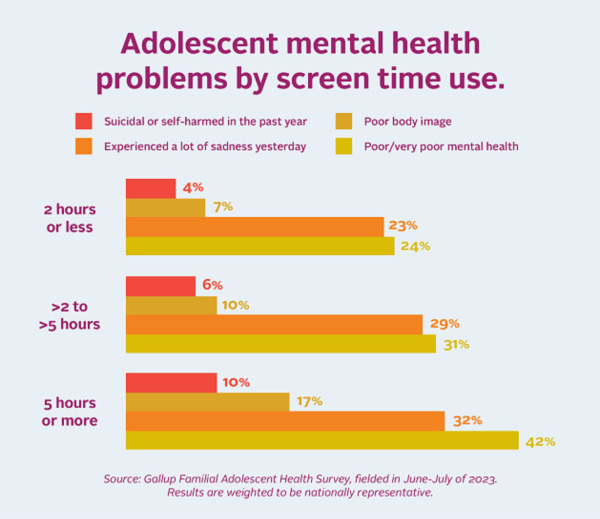On Monday, Sept. 23, California Governor Gavin Newsom signed a new school smartphone restriction act into law, AB 3216, the Phone-Free Schools Act. Under this new law, all California schools must craft and implement a phone-restricting policy by July 1, 2026. This follows growing community concern about student smartphone usage, which led to the Tamalpais Union High School District (TUHSD) requiring staff to store students’ phones during class periods.
This new law does not specify what school phone restriction policies must look like. The parameters, as set by the Phone-Free Schools Act, are “to limit or prohibit the use by its pupils of smartphones while the pupils are at a school site,” which allows room for interpretation within different schools and districts statewide.
This bill provides a list of exceptions in which “a pupil shall not be prohibited from possessing or using a smartphone” as stated in the Phone-Free Schools Act, which includes emergencies, staff permission, and specific students’ learning plans. This addresses parent and student concerns that the implementation of phone policies would hinder communication accessibility in the case of an emergency.
According to TUHSD Superintendent Tara Taupier, the act will not likely impact TUHSD as the policy implemented by the district Jan. 2024 already complies with this new law. Though the law may not affect students in the district immediately, the mandate highlights a recurring theme of harsher restrictions on phones in schools. Taupier believes this act gives a look into the future of phone restrictions that will not leave the decision up to individual schools.
“The broader implications [of this policy] are that the state is setting a mandate and not leaving it up to local school boards to make the decision on their own, as our school board has already done. It also means there could be some consequences from the state if schools and districts do not follow the law,” Taupier said.
The Phone-Free Schools Act cites student distraction, lowered academic performance, and severe mental health consequences, as a result of smartphone use. Marin County Superintendent of Schools John Carroll sees the negative impacts of phones in classrooms.
“[There’s] such a long list of why smartphones are problematic in a classroom. The obvious one is it encourages students not to pay attention to what the teacher is trying to teach or to participate and to be distracted by things that are non-instructional,” Carroll said.

According to the National Library of Medicine, increased phone use results in cyberbullying, leaving students more exposed to online hate. The rise in this 21st-century bullying tactic correlates with higher rates of suicide, self-harm, and poor mental health. By decreasing access to phones, the act hopes to lower the impact of cyberbullying.
“The incidences of bullying at schools across the country have increased dramatically since smartphones became more common at school… [We’ve seen] smartphone technology [being used] to facilitate some major [bullying] events, we [have] heard reports like that for a long time,” Carroll said.
Smartphones’ addictive qualities can significantly harm teens’ mental health and ability to thrive in social environments as well, according to Archie Williams Wellness Outreach Specialist Beatrix Berry. Berry believes that high school students are especially vulnerable to the negative effects of smartphones and their addictive nature.
“I think why [smartphone use] has such an impact on teens is because [you’re] at a stage where your brain isn’t fully developed. You’re more susceptible to the dopamine rush [phones provide]. I think where it becomes negative is people isolating themselves [by] being on their phone so much, not talking to peers as much, using it more as a crutch,” Berry said.
TUHSD’s existing policy falls within the necessary guidelines, so students and teachers will likely not see immediate or direct repercussions of this law. However, as the latest installment in a series of increasing restrictions on student phone usage, this development may influence further bans. Students can expect to hear more about phone restrictions as the year progresses, including the potential for a more restrictive policy with the proposal of Yondr pouch implementation in TUHSD.










